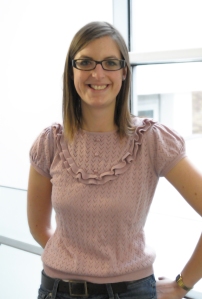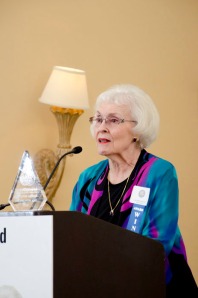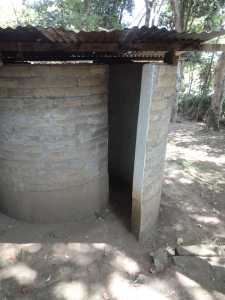Earlier this year, SAGE announced the internal appointments of Martha Sedgwick as Executive Director of Product Innovation within the UK, and Todd Baldwin as Executive Director, Online Library and Reference Publishing within the US. In order to find out a little bit more about what these new roles will entail at SAGE, we got Martha in for a quick interview!
 Congratulations on your promotion, Martha! Can you tell us a little bit more about your new role at SAGE? What will it entail?
Congratulations on your promotion, Martha! Can you tell us a little bit more about your new role at SAGE? What will it entail?
Thank you! As Executive Director of Product Innovation, I will assume responsibility for leading the development of SAGE’s online products for the library market, together with a number of new digital initiatives for the College market. My team of Product Managers lead the development of our existing products which include SAGE Journals Online, SAGE Knowledge, SAGE Research Methods, CQ Researcher, and the CQ Electronic Library products. I will also be working closely with Todd Baldwin (Executive Director of Online Library & Reference Publishing at SAGE) to continue to explore new product innovations to support the evolving digital reference and research needs in this space. SAGE is experimenting with a number of new initiatives to support faculty and higher education (HE) as they continue to deliver top-class education for their students. I’m working closely with our new Director of College eLearning, Darin Derstine and our College teams on the development of new products in this space.
We are at a very exciting point in the development of HE as we see developments in technology open up opportunities, access, and application of teaching, learning, and scholarship across the globe. Both mine and Todd’s roles demonstrate SAGE’s continued commitment to developing innovative solutions that support education and scholarship.
What do you hope to accomplish in your new role?
I want to continue to support SAGE’s focus on our customers and truly understand the needs of the institution, the library, the researcher, the faculty member, and the student to ensure that we develop and support our customers and scholarly partners effectively. Our content should be as easily accessible as possible and should be delivered elegantly to provide a pleasurable experience. I’m keen to make innovations with the HE community fun and energising for the people at SAGE – to push our expectations and to deliver with excellence.
SAGE already has a suite of products to support education and scholarship. Can you tell us a little more about these?
A large focus of our development over the past 5 – 10 years has been to deliver our traditional content digitally. We launched our own online platform to house our journal content in 2006, partnering with HighWire Press and today hosting almost 800 journals across the HSS and STM disciplines. Last year we launched our SAGE Knowledge book & reference platform, recently named SIIA Content CODiE Award Finalist for Best General Reference Service 2012. As an enhancement to this product, in April 2013, we launched SAGE Navigator, the literature review tool to provide students with a launching-off point in their area of study as they look to read the key literature in their particular field. In parallel we have explored what we can offer at SAGE beyond our traditional publishing programs. In 2011 we launched SAGE Research Methods, our award winning tool that is a destination site for academics to kick off their research design and research project development process.
We are incredibly excited by the launch of our StateStats data product, and are looking to expand this area of data publication to make data more accessible and available for student use.
In October 2012, we announced a key acquisition that marked our movement into the area of primary source archive publishing. Adam Matthew provides key primary archive material for the library community and it is a partnership that we are incredibly excited to develop over the forthcoming years.
As you have already mentioned, the way that people are consuming and accessing information is shifting dramatically. What do you foresee to be the biggest challenges within the online product market over the next year or so?
Market issues currently centre on ease of use, access and discoverability. We are very much in a user-centred generation where researchers and students want to feel “equipped to learn.” The community wants to be able to access the material that they need in the format that they want, all quickly at the click of a button.
One of the biggest challenges that will continue as we move forward is defining a strategy and making decisions around what are significant investments in digital and online products. We need to understand which end-user technologies will offer viable opportunities for us to present information at a time where there is a lot of change in terms of the products being used, mobile devices, and the use cases. Many of the technologies available for online products and mobile technology for example, are still evolving and today there are limitations to what we can deliver in some areas. Of particular note for academic publishing for example is access control for remote users and multimedia delivery. Publishing is increasingly about establishing and maintaining processes, not about producing once-and-for-all finished and final products.
How do you think SAGE is positioned to adapt to these changes/challenges?
SAGE is active across both the library and college marketplace, and our strong partnership with both types of partners enables us to talk through challenges and opportunities, understanding more about where we can best place our support. Our product innovation is firmly grounded in market research. We have established a fantastic set of Library Advisory Boards who meet regularly to provide feedback, ensuring we are listening to key issues and concerns in our markets and are able to respond to them. We continue to hold conference research activities, longitudinal studies to track market trends, and market research plans for product development – we work in partnership with our communities to ensure that we continue to support the scholarly community with the research they need, in the format that they want. Our status as an independent company enables us to focus on the changing needs of our authors, editors and societies, and drives us and our approach to innovation and change.
Can you tell us a little more about what you are currently doing?
SAGE continues to explore new ways to promote content to respond to the digital demand. We are currently looking at the development and enhancement of our eTextbooks, such as the recently launched 4th edition of Andy Field’s Discovering Statistics using SPSS textbook which was launched with enhanced online resources such as WebAssign, MobileStudy, CWS development, and increased social media support and interaction. We are also developing new digital assets and online courses for institutional sales and are currently exploring institutional contracts for end of 2013.
Engaging with the way that research practices are changing, however, is not just through product development. SAGE is also actively involved in supporting innovative approaches within the community. In 2011, Plymouth University launched its e-book scheme, the first of its kind in the higher education sector, providing first and second year students with free downloads of their core textbooks. SAGE was one of five publishers supporting this scheme, providing the highest number of core texts for second-year students. The innovative approach at Plymouth, which was recently recognised at the Guardian Higher Education award, is all about enhancing the student learning experience. Supporting the move towards innovative, interactive and collaborative learning as a digital environment is something that we continue to explore here at SAGE, through both our online products, enhanced digital features, and support for our e-textbook development.
Thank you for your time! Just as a little aside for our readers who may be interested in getting into online product development, what would you say is the one best piece of advice that you would give them?
Think about what you really wish you could have done or used as a student carrying out your research and propose that new product idea to a publisher!


![BabonesPhoto-2[1]](https://sageconnection.files.wordpress.com/2013/06/babonesphoto-21.jpg?w=225&h=300)







